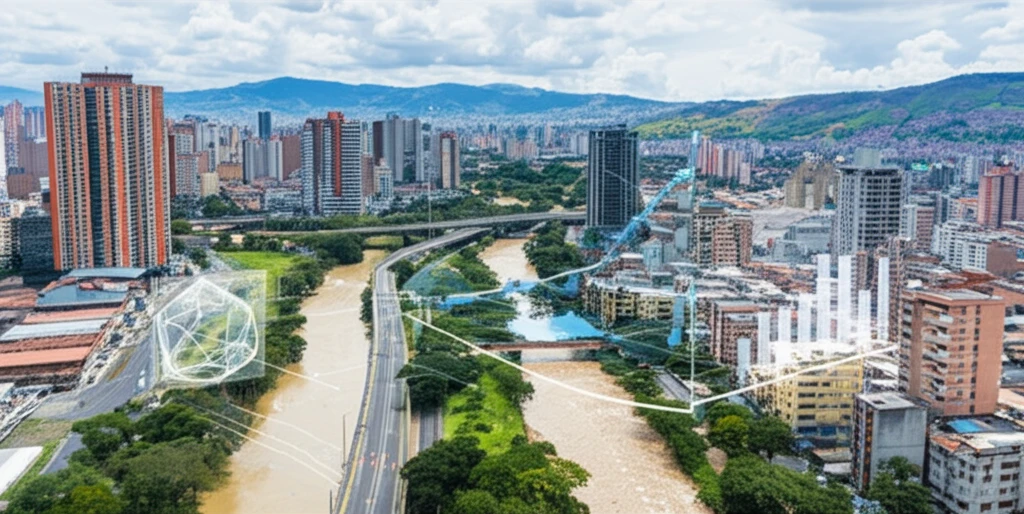
Is Your City's Water Safe? Unveiling Medellin's River Recovery Plan
"A Deep Dive into Water Quality Modeling and Urban River Restoration"
For cities worldwide, maintaining clean and safe water sources is a critical challenge, particularly for rivers that flow through urban areas. These rivers often suffer from pollution due to industrial discharge, residential runoff, and inadequate waste management. The consequences can be dire, impacting public health, ecosystems, and the overall quality of life for city residents.
Medellin, Colombia, a city nestled in the Aburrá Valley, has been grappling with these issues concerning the Aburrá-Medellín River. Recognizing the importance of this vital resource, Medellin has embarked on an ambitious journey to restore its river using advanced water quality modeling techniques. This initiative aims to assess the river's health, project the impact of various interventions, and guide the city towards sustainable water management.
This article dives deep into Medellin's water quality modeling project, exploring the strategies, challenges, and successes of this endeavor. We'll uncover how innovative technologies and community engagement are driving the transformation of a polluted urban river into a source of pride and well-being for the city.
Decoding Medellin's Water Quality Model: How Does It Work?

Medellin's approach revolves around a sophisticated water quality model called Qual2Kw. This model serves as a virtual representation of the Aburrá-Medellín River, allowing scientists and city planners to simulate different scenarios and predict the outcomes of various interventions. Here’s a breakdown of how it works:
- Water Transportation: Advection and dispersion, which determine how pollutants spread throughout the river.
- External Sources: Water intakes and wastewater discharges that add or remove water and pollutants.
- Internal Sources: Benthic oxygen demand (the consumption of oxygen by sediment at the river bottom) and biochemical transformations that affect water quality.
The Ripple Effect: How Medellin's River Restoration Impacts the Community
Medellin's commitment to restoring the Aburrá-Medellín River demonstrates how innovative water quality modeling and strategic interventions can revitalize urban waterways. By continuing these efforts, Medellin is paving the way for a cleaner, healthier, and more sustainable future for its residents. The city’s success serves as an inspiration for other urban centers facing similar challenges, proving that even the most polluted rivers can be brought back to life with the right tools and dedication.
